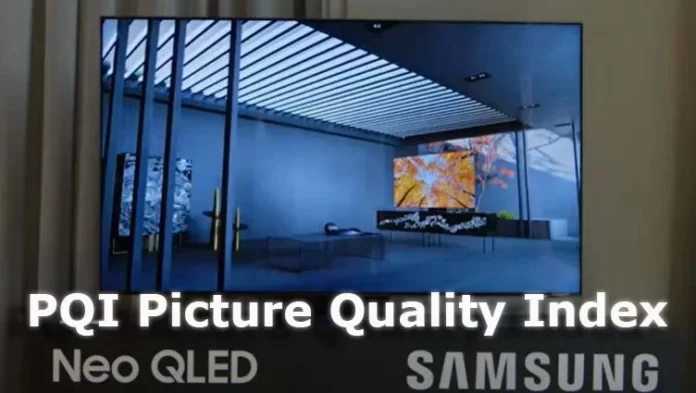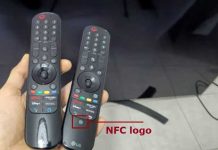The TV market is vast, but it’s also very competitive. With the start of the production of LED TVs, the question arose about how to present a TV better than other manufacturers. Qualities indices were born, but they did not help some brands. So Philips, Toshiba, Sharp, and Grundig refused to produce TVs; they sold the TV business or licensed the brand to another manufacturer. But this article is about Samsung.
What PQI means on Samsung TVs
The PQI Picture Quality Index is Samsung’s attempt to rank its TV models to show which is better. This trend started in 2012 when all TV manufacturers started using one index or another. Initially, these indices were labeled as Hertz and reached tremendous heights. In reality, companies misled users, and in 2015, these indexes lost their Hertz and turned into faceless numbers. If we talk about Samsung, for example, the quality index is not used at all in the US. In Europe, the quality index is still used, but only on certain TV lines, and is gradually disappearing.
Samsung’s history of creating the PQI index
Initially, Samsung used the Clear Motion Rate index, and then PQI appeared; this happened in 2015, after the disappearance of PQI, such as in the United States was revived Motion Rate. But in 2021, Motion Rate is also no longer mentioned.
The reason is straightforward: if a manufacturer publishes an index, he should explain how it is calculated and prove it in practice, but in reality, it is impossible. That’s why, sooner or later, all these indices will disappear and be replaced by other terms, such as game motion with a yes parameter.
How the PQI is calculated
People need to learn how Samsung calculates the Picture Quality Index. As a result, TVs with the same display, motherboard, and processor will have different PQI scores. It should also be noted that Samsung can use displays from different manufacturers in the same TV model, and, for example, from 2022, Samsung will no longer produce LED displays for TVs, having sold its factory to the Chinese company TCL. Samsung will only produce displays for the new generation of QD OLED TVs, as LG’s sales practice has shown the great potential of OLED displays.
But let’s get back to the PQI; every year, the picture quality index increases, and the dynamics of the PQI are as follows.
2015: 100 – 2400 PQI
2016: 400 – 2600 PQI
2017: 600 – 3400 PQI
2018: 800 – 4000 PQI
2019: 1000 – 4300 PQI
2020: 1500 – 4500 PQI
2021: 2000 – 4900 PQI
2022: 2000 – 5000 PQI
2023: 2500 – 5500 PQI
In the USA, Samsung doesn’t use PQI but Motion Rate instead.
As I said, the PQI index is only used in some countries, such as Europe.
The higher the index, the more potential the TV has. But this is just marketing. PQI is not about picture quality; it would be more accurate to call it a TV rating. If you want an answer, what does PQI mean? The answer is nothing, and even if you know the PQI, it is impossible to determine the class of a TV. It is just an index created for marketing purposes; the more features the TV has at the operating system level, the higher the PQI will be.
Picture Quality Index and Hertz
It is essential to know that TVs are only manufactured with 60Hz or 120Hz screens, but with the advent of the new 2.1 standard HDMI ports, TVs have started to support 144Hz refresh rates when used with computer graphics cards. Therefore, PQI can be matched as follows: PQI and TV frequency.
PQI 1000 – 3000: TVs with 60Hz displays, 8-bit color depth and FRC technology
PQI 3000-4000: TVs with 60Hz displays, 10-bit color depth.
PQI 4000-6000: TVs with 120Hz displays, 10-bit color depth.
Picture Quality Index vs. Motion Rate
PQI is a quality index considering all TV, screen, and software features. However, it needs to be more precise how it’s calculated.
Motion Rate is an index that says the quality of the picture on the TV is visually better after being processed by the TV programs. For example, suppose you are watching a video on a TV set with a frequency of 60 Hz, and you turn on programs that improve the quality of the video. In that case, you can visually say that you will perceive the video as if it had a frequency of 120 Hz. Similarly, if you have a TV set with a display of 120 Hz, then the Motion Rate will be 240; it is also very conditional.
What is the best picture quality setting for a Samsung TV?
Since we’re talking about picture quality, asking for the best setting for a Samsung TV is fair.
I recommend choosing the ‘Cinema’ picture mode, as it is the most accurate of all the modes available and offers the most significant number of settings. All the settings in this mode are balanced to give you the best picture quality while maximizing your viewing comfort. If you want to adjust the picture quality manually, here are the best settings.
Contrast at “70
Brightness – set to ’50’, the setting may vary depending on the type of screen; you will need to select sufficient brightness while maintaining black levels for LED TVs,
Sharpness – at “0”, Colour – at “60” and Hue (G/R) – at “0”.
To sum up, the PQI is an index for marketing and advertising Samsung TVs. It is not an accurate measurement, it is not comparable to Hertz, and it cannot be relied upon to determine the picture quality of a TV.






